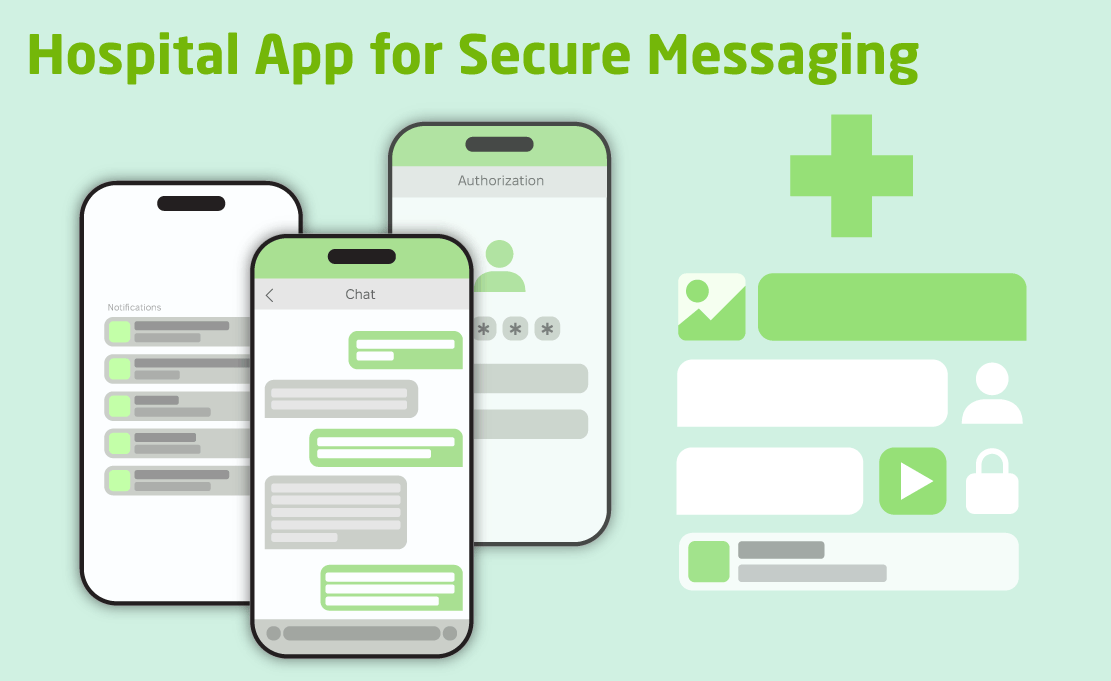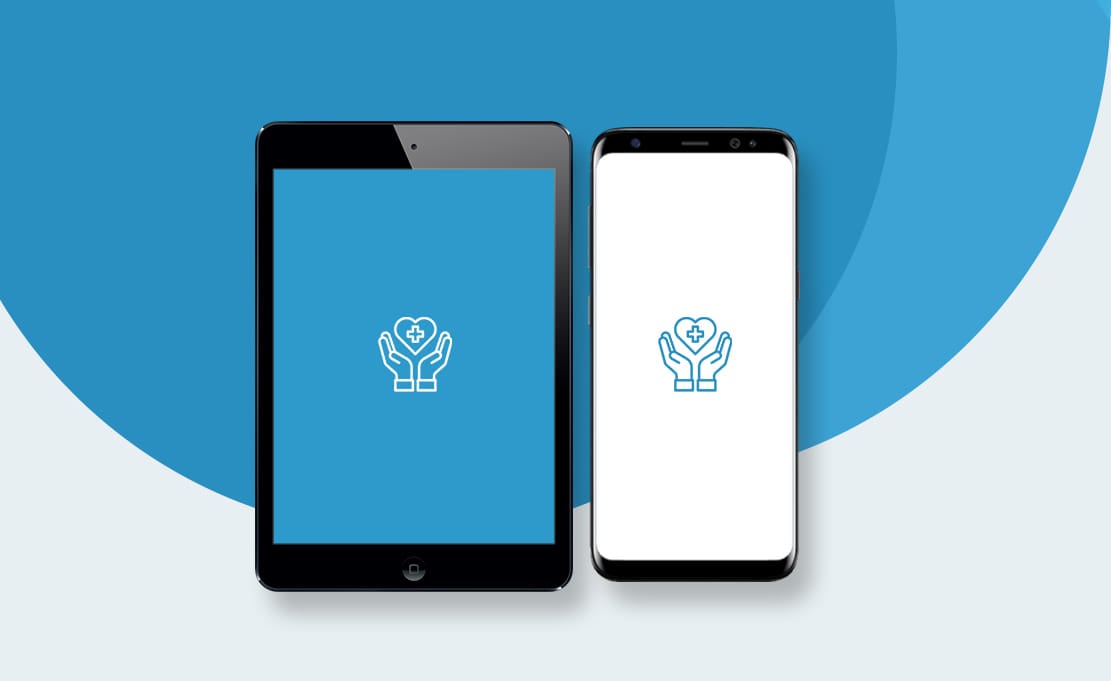A symptom tracker app is a mobile solution for patients who undergo pain therapy to monitor their health conditions and communicate efficiently with their doctors. The application is available on iOS and Android devices, was launched as an MVP, and transformed into a fully fledged product. The solution allows patients to make manual entries and keep a diary of the disease to assess its progression and treatment results. The application offers an alternative way of communication between doctor and patient, as well as improving individual health monitoring.
My Therapy Companion – Symptom Tracker App
- The customer got the MVP of his mobile healthcare app for symptom tracking
- The created mobile medical app is available for the audience that uses either iOS or Android
- The application makes patient’s communication with the doctor more accessible
A symptom tracker app is a mobile solution for patients who undergo pain therapy to monitor their health conditions and communicate efficiently with their doctors. The application is available on iOS and Android devices, was launched as an MVP, and transformed into a fully fledged product. The solution allows patients to make manual entries and keep a diary of the disease to assess its progression and treatment results. The application offers an alternative way of communication between doctor and patient, as well as improving individual health monitoring.
Business Challenge
Before starting the development of the medical app, the customer executed in-depth market research in order MVP could take its place in the medical niche. Hence, it included competitors’ analysis. Based on the results of this analysis, the customer identified the following:
- What competitor’s software lacks, and which features are missing
- What functionality should be offered for the potential symptom tracker app user
The initial business plan was to launch the application in Switzerland and find medical institutions to use the developed solution. The next step is to promote the solution in other countries. After the successful implementation of the mobile application and receiving feedback from the market, the customer will be able to plan how to extend the functionality of the medical app.
Solution
From the technical point of view, .NET consultants were responsible for all the phases of the software development cycle:
- Analysis of initial requirements (including creation of the app design)
- Planning sessions
- Architectural design and software development
- Testing
- Deployment
- Maintenance and support
In fact, one of the key points for the success of the medical application is keeping it simple. Sometimes medical information can be overwhelming, which is why the main goal of health app design is to make the app clear, compact, and functional. The design team proposed its vision of the symptom tracker app that combined all these advantages. Besides, all functionality is clear and understandable to the user after the first login into the application and the first interaction with the system. The development team implemented this in the form of a code and a functional medical application.
Project key points:
- Backend part: C#/.NET
- Frontend part: Xamarin Forms, which was later migrated to .NET MAUI
- DB: Cosmos
- Cloud: Azure
How Does the Symptom Tracking App Work?
The HIPAA/GDPR-compliant tracking app consists of 2 medical apps, in particular, the doctor’s and the patient’s apps. Patients log in to the application and can keep a diary of diseases, where it is possible to describe what hurts (disease – complaints – symptoms – score on the scale). Also, patients can get in touch with their doctor through the app. The doctor sees all the complaints, patient appeals, the dynamics of the disease, and analytics in the form of graphs.
In the MVP version, diseases could be selected from the following:
- Cancer
- Cardio
- Locomotor
- Respiratory
After disease selection, the patient defines the body part that hurts and chooses the symptoms. Then the patient defines the date, day period morning – noon – night and scores the pain. If the severity of the pain is high, this patient receives an alert with the proposition to call the doctor. App users can either call the doctor or ignore the shown message. The doctor also receives an alert as soon as the user creates the record with high pain severity.
The patient’s well-being graph is available for the patient and his doctor. The graph presents days of records (during the last 7 days) and severity records. Below the graph, special switches are located for body parts with recorded symptoms. Switchers stand for the visibility of corresponding lines on the graph and can be turned on/off.
To sum up, the doctor’s app offered the following functionality:
- Overview of the patient’s dashboard with the medical history
- Overview of the patient’s symptom logs and diary entries
- Access to the graphs with the health progress visualizations
- Documentation with an option for exporting data from the EHR system
- Notifications and alerts
The patient’s app has the following functionality:
- Personal profile with medical history, profile settings, and other information
- Symptom tracking module in the form of a disease diary with health conditions
- Analytics with the visualization of the health progression
- Notifications and alerts
Later, Chudovo expanded the customer’s application and added a telemedicine module, which included the following:
- Video or audio consultations and sharing of symptom logs
- Appointment management
- Messaging
Business Impact
The main objective of both start-up co-founders was the development of a state-of-the-art software solution in the medical field and transforming the way of patient care. The Start-up has achieved its aim. At this moment, the customer continues to promote this solution and involves more medical organizations to use it.
Chudovo: Healthcare Solutions Provider
Medical field – one of the areas that remains relevant for society. In fact, the amount of healthcare start-ups increases every month. In most cases, all these startups facilitate the realization of their plans by developing the appropriate software. Sometimes startups are sustained by the software only, sometimes the software is used in combination with the hardware or as its complement.
All things considered, Chudovo, custom healthcare software development professional, can help your start-up to turn your idea in the medical sector into reality. Our engineering team can offer the following options:
- Development of the health solution from scratch. We can take over the whole process of software development and provide the services with the highest level of quality. For instance, our team took part in telehealth solution development. Planning and analysis, design and architecture, development and testing, deployment and support – all these activities were an integral part of the health care project.
- Development and maintenance of the existing solution. Our software engineers can join your team for the further development, support, and maintenance of your medical software. For example, our software developers joined the customer’s team to execute the development and support of the healthcare applications ecosystem. His system consists of several medical applications that work in parallel. They are designed to manage as well as record prescriptions, support medical institutions in patient’s care, etc.
Chudovo is a health app development provider, who can help your business to create a unique medical solution. Let’s talk and find possible options for collaboration.
Symptom Tracker App Development Costs
Symptom tracker app is the solution for health monitoring that enables users to log their symptoms over time. Individuals document their health-related signs in the digital journal and thus control their well-being.
Development Costs
The common development costs for the implementation of the symptom tracking app: $35.000-$50.000. Although various factors can significantly influence the final dev costs:
- The scope of the functionality that the chronic condition tracker app should include. For example, there are applications with a basic set of features or more advanced ones like AI-powered features for symptom checking, data analysis, etc.
- The supported platforms for the health monitoring app
- Integration requirements. For instance, the need for integration with wearables, third-party APIs, etc.
- UI/UX design
- The selection of the technology stack for the implementation of symptom tracker app & QA services
- Post-development support of the health symptom log app
Implementation Time
4-6 months is the common implementation time of health symptom log apps. Anyway, the duration of the project can vary based on the scope of the features to be developed.
The Main Feature Set of the Personal Health Journal App
There are various disease tracking and monitoring applications on the market. However, symptom tracker apps commonly have the following parts of functionality:
- User profile management. This module enables users to configure their profiles and add basic information.
- Symptom logging. The module offers the functionality for keeping a symptom diary with severity, notes, and other related information.
- Notifications, reminders, and alerts.
- Educational resources module. This is an integration with the educational content, related to the patient’s health.
- Graphical Representation. This functionality enables a visual representation of the patient’s well-being over time.
- Data export and sharing. This feature enables users to export their symptom history data.
- Medication tracking. This module enables users to track their medication intake with dosages.
- Data synchronization from wearable devices. If the symptom tracker app has an integration with wearables it syncs the health-related data, making disease monitoring & treatment processes more efficient.
- Data analysis and insights.
- The customer got the MVP of his mobile healthcare app for symptom tracking
- The created mobile medical app is available for the audience that uses either iOS or Android
- The application makes patient’s communication with the doctor more accessible


